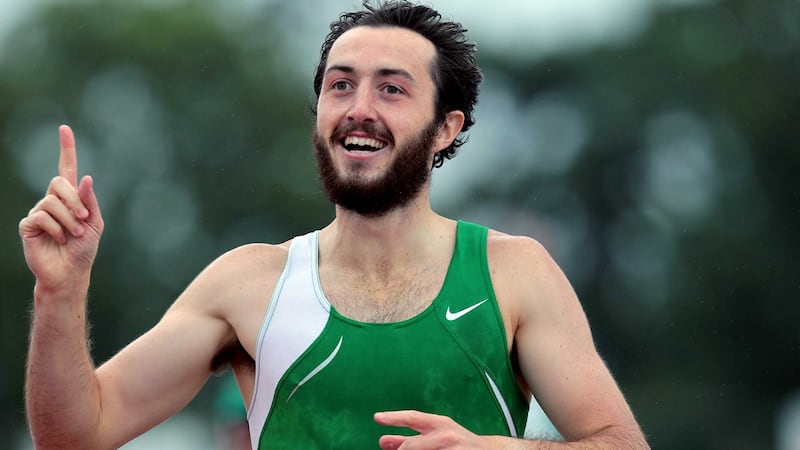It was good to see so many Irish athletes enjoy a positive start to the season, with three Irish senior records falling this past weekend alone, and five Irish athletes across four events are currently ranked in the top three in Europe.
Set that against all the failings of Athletics Ireland laid out in the recent Tokyo Olympics review and it’s evidence again the best Irish athletes succeed not because of the system here but in a sort of rally against it.
It seems Athletics Ireland got very little right before Tokyo. A lack of coaching structure and pathway, a lack of framework for athlete support beyond the Sports Ireland campus, a lack of clarity in the funding decisions.
That’s a lot lacking for any sporting organisation and the only way of addressing that is from the top down. If the same was said about Irish football or rugby would it be acceptable?
Sonia O’Sullivan: Watching Katie with other excelling Irish athletes a moment to treasure
Sonia O’Sullivan: Key to success is self-belief and hard work
Sonia O’Sullivan: Transgender athletes cannot be allowed to compete in women’s sport
Sonia O’Sullivan: A podcast can make light work of the daily run, and much more
It’s no surprise most of the top Irish athletes currently performing at a high international level are operating outside of Ireland with their own high-performance coaches and training environments which they know breeds success.
For too long now the athletes have regularly stepped up and provided some highlights to paper over the cracks in the Athletics Ireland high-performance system, if there even is one, or if it can even be called that. It also lacks accountability and transparency.
Without coaches the athletes would be lost, the stabilising factor would be gone and the uncertainty can creep in
You rise to the top and achieve or you get left behind. The problem with the structures in Ireland is that too many athletes get carried along for too long, if you don’t deliver on the European, World or Olympic stage or show some signs of progression each year then it’s unlikely that miracles will happen and anything will change.
High performance
The Sport Ireland funding is generous but the dispersion of funds is too often diluted, trying to help everyone and hurt no one. The truth is in high-performance tough decisions have to be made and in order to do this there needs to be someone on the ground monitoring what truly is high performance.
Standards are continually rising and particularly now with the improved shoe technology. The sub four-minute mile is no longer that great of an achievement as it once was, just like the sub four-minute 1,500m for women is now the benchmark for success on the world stage.
Last year alone 105 men broke four minutes for the mile, 10 years previously that number was just 59. Similarly for women over 1,500m last year 14 women broke four minutes, in 2011 not a single woman ran under it. In the 800m last year 52 women ran under two minutes, in 2011 that number was 37. We can’t continually get too excited by fast times as this is not a true indicator of potential performance when medals are on the line.
The athlete support structure in Ireland is broken in part because once athletes get into the system part of the mindset is to continually be supported. Coaches are never really considered when it comes to how the funds are dispersed and that’s something that needs to change.
I was recently at the Sound Running meeting in California as part of the coaching staff with the Union athletics club. There were a number of groups making the trip to test their fitness after a stint at altitude, including the Dublin track club along with the Melbourne track club.
On the day I took a walk with Feidhlim Kelly, coach of the Dublin track club, some of the athletes he coaches receive some funding but there is no support for the personal coaches from the federation or Sport Ireland.

The coaches are there to steady the ship and guide the athletes. It’s so much more than planning the track sessions, daily runs and game programs. It’s all about creating the right environment, just being there to get a feel for how the athletes are managing. Communication is key, the relationships develop even more when in a new environment and the ability to adapt and change is essential.
Most coaches will find a way to spend time with their athletes at home, at training camps and at the races, however it comes at a cost financially. Most will take the hit because they are passionate about what they do, and because of the satisfaction they get but more and more are questioning why they are not acknowledged or appreciated by the federation, by Sport Ireland.
Without coaches the athletes would be lost, the stabilising factor would be gone and the uncertainty can creep in.
Stipend
When an athlete is funded there should be a co-relation with their coach, whether it’s a percentage of an athletes funding is assigned to the coach or a fixed stipend. In Australia an Olympic athletes’ coach is given a stipend. If the coach has more than one athlete they get the same fixed sum, so a coach of 10 athletes is not cashing in and making a living by gathering together all the best athletes.
I was at the Nike campus recently and wandered over to Ronaldo Field where a crowd had gathered. I was curious to find out what it was about and was surprised when I got there. The theme of the day was coach appreciation – the leaders, the teachers, the ones we rely on to guide us whether on the biggest stage or just helping someone to get out the door and feel good about themselves.
It resonated so much with what is lacking in the Athletics Ireland’s high-performance unit, that lack of appreciation and inclusion of personal coaches in the planning of an athlete’s support system.
It’s not purely about handing out cash but about ensuring an athlete has the right people around them when preparing on training camps throughout the year and when they go to the races.
An experienced coach is essential to the development of athletes and ensuring that they get the best from themselves. Those relationships are developed over time by coaches who are passionate and understand what is required but also how to drive the athletes forward.
There is more to coaching and developing an athlete than PowerPoint presentations, templates and projected progressions. Only a coach who is supported to be on the ground alongside the athlete at periods throughout the training and racing phases will be able to see the full picture and help to drive the athletes forward and lift them up to a new level.
For too long now Ireland has been relying on a projected template of performance and criteria to fund athletes but there is little evidence that something created over 10 years ago is a reliable performance indicator today.
Until that coaching element improves Irish athletes will continue to succeed despite the worst efforts of Athletics Ireland.






